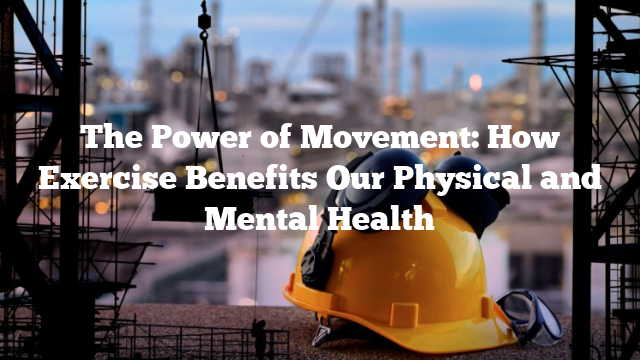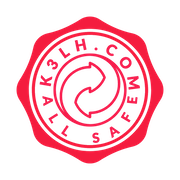Movement – The Key to a Healthy Life 🏃♀️🏃♂️
Are you tired of feeling sluggish and lethargic all the time? Do you find yourself struggling to stay active and healthy? If yes, then you’re not alone. In today’s fast-paced world, where we spend most of our time sitting in front of screens, movement has become more critical than ever before. Movement is the key to a healthy life, and in this article, we’ll explore everything you need to know about it. From what it is, why it’s essential, to tips and tutorials, we’ve got it all covered. So, let’s dive in!
What is Movement, and Why is it Essential?
Movement is the act of changing physical location or position. It’s any activity that involves using your body and muscles to move. It’s essential for maintaining good health and well-being. Our bodies were designed to move, and when we don’t move enough, we become more prone to various health problems such as obesity, heart disease, diabetes, and even cancer. Movement helps keep our bones, muscles, and joints healthy, improves our mood, and reduces stress.
Facts About Movement
– According to the World Health Organization, adults should engage in at least 150 minutes of moderate-intensity aerobic physical activity throughout the week.
– Sitting for long periods can be detrimental to your health, even if you exercise regularly.
– Walking is one of the best forms of movement as it’s low impact, easy to do, and can be done anywhere.
Listicle – 5 Benefits of Movement
1. Improves Cardiovascular Health – Regular movement can help improve your heart health by strengthening your heart and reducing your risk of heart disease.
2. Boosts Your Mood – Movement releases endorphins, which are chemicals that make you feel good and can help alleviate symptoms of depression and anxiety.
3. Increases Energy Levels – Movement can help increase your energy levels by improving blood flow and oxygen supply to your muscles.
4. Reduces Stress – Movement can be a great stress reliever as it helps reduce cortisol levels, which is a hormone that’s associated with stress.
5. Promotes Better Sleep – Movement can help improve the quality of your sleep by reducing insomnia, increasing the duration of sleep, and improving sleep quality.
Tutorial of Movement – How to Start Moving
If you’re new to movement, it can be challenging to know where to start. Here’s a step-by-step guide to help you get started:
Step 1 – Consult with a healthcare professional to ensure you’re healthy enough to start exercising.
Step 2 – Choose an activity that you enjoy and that suits your fitness level. Some examples include walking, swimming, cycling, or dancing.
Step 3 – Start with a low-intensity workout and gradually increase the intensity and duration over time.
Step 4 – Set achievable goals and track your progress to stay motivated.
Tips of Movement – How to Incorporate Movement into Your Daily Routine
Here are some simple tips to help you incorporate movement into your daily routine:
1. Take the stairs instead of the elevator.
2. Park further away from your destination, so you have to walk farther.
3. Take a 5-minute walk break every hour if you have a desk job.
4. Do bodyweight exercises such as squats and lunges during commercial breaks while watching TV.
5. Use a pedometer or fitness tracker to track your daily steps and set goals to increase them.
Question and Answer of Movement
Q1. What are some low-impact forms of movement?
A1. Walking, cycling, swimming, and yoga are all great low-impact forms of movement.
Q2. Can movement help with weight loss?
A2. Yes, movement combined with a healthy diet can help with weight loss.
Q3. How much movement do I need to do every day?
A3. The World Health Organization recommends at least 150 minutes of moderate-intensity aerobic physical activity throughout the week.
Q4. Can movement help with joint pain?
A4. Yes, movement can help reduce joint pain by strengthening the muscles around the joints and improving flexibility.
Conclusion of Movement
Movement is the key to a healthy life. Incorporating movement into your daily routine can help improve your overall health, boost your mood, and reduce stress. Whether it’s walking, swimming, or cycling, find an activity that you enjoy and start moving today. Remember to start slow and consult with a healthcare professional before starting any new exercise routine. Here’s to a healthier, happier you!
Recommendations:
- Public Safety Diver Logo Page 1 of 4 1 2 3. Psdiver monthly promoting free continuing education safety information and news for fire department divers police divers and sar and public safety dive teams…
- Workplace Safety Signs And Symbols, Why so important? Proper workplace safety signs and symbols always place in a construction site, mining site, oil and gas site or hospital and your workplace.
- Work Health And Safety Images If you're looking for work health and safety images images information linked to the work health and safety images topic, you have visit the right site. Our site frequently provides…
- Fire And Safety Pictures If you're searching for fire and safety pictures pictures information related to the fire and safety pictures interest, you have visit the right site. Our site always gives you hints…
- Occupational Safety Logo Looking for free vectors of health and safety. The institution of occupational safety and health iosh is a british organisation for health and safety professionals. Occupational Safety And Health Logo…
- Hot Weather Safety Topics They wear personal protective equipment like respirators or suits. Our mission is safety. Heat Safety Tips And Resources The body temperature can rise to 106 degrees. Hot weather safety topics.…
- Environmental Safety Images If you're searching for environmental safety images pictures information linked to the environmental safety images topic, you have visit the right site. Our website frequently provides you with suggestions for…
- Get PPE Easily with a PPE Vending Machine PPE Vending Machine. Personal Protective Equipment (PPE) is an essential component for the safety of many individuals. It provides the necessary protection to ensure that employees and individuals are safe…
- Workplace Health And Safety Representative Poster Health and safety representatives information for elected health and safety representatives hsrs. But reminders posted in your workplace andor community can help. Effective Health And Safety Committees Infographic One of…
- Workplace Health And Safety Logo The orange color also is representative of the cautious and careful attitude necessary to. Find health and safety logo stock images in hd and millions of other royalty free stock…
- Safety Week Image If you're looking for safety week image images information linked to the safety week image keyword, you have visit the right site. Our site always provides you with suggestions for…
- Safety Plan Worksheet For Addiction It is important that the safety plan worksheet is completed with the therapist and patient working together. Psych and the organization carmha and simon fraser university see link welcome to…
- The Power of Movement: How Exercise Impacts Your… Introduction Movement is a fundamental aspect of human life that we often take for granted. From walking and running to dancing and playing sports, movement enables us to express ourselves,…
- Health And Safety Topics Occupational health safety is the industry leading news magazine enewsletter and website for occupational health and safety professionals focusing on problem solving solutions latest news. Health safety committee member health…
- Seat Belt Safety Pictures If you're searching for seat belt safety pictures images information linked to the seat belt safety pictures topic, you have pay a visit to the right blog. Our site frequently…
- The Power of Movement: How Exercise Can Change Your Life Movement: The Key to a Healthy Lifestyle Movement is an essential aspect of a healthy lifestyle. It is the ability to move your body freely without any discomfort or pain.…
- Life Raft Image If you're searching for life raft image images information connected with to the life raft image keyword, you have visit the right blog. Our site frequently provides you with hints…
- Safety Precautions Before Typhoon Photo by rem rembcc 17. The chaos of a typhoon is also a prime time for injury and conditions may make disease more likely. Weather The Storm What To Do…
- Crazy Safety Pictures If you're searching for crazy safety pictures pictures information related to the crazy safety pictures keyword, you have come to the right blog. Our site always gives you suggestions for…
- Safety Committee Images If you're searching for safety committee images images information linked to the safety committee images topic, you have visit the right site. Our site frequently provides you with suggestions for…
- Safety Plan Worksheet No portion of the safety plan template may be reproduced. Displaying all worksheets related to safety plan. Safety Plan Worksheet Therapist Aid I can sometimes anticipate when i need to…
- Safety Plan Worksheet For Adults It is important that the safety plan worksheet is completed with the therapist and patient working together. 1 feeling safe being safe ety in an gency. Safety Plan Worksheet Therapist…
- Haccp Image If you're searching for haccp image pictures information linked to the haccp image keyword, you have come to the ideal blog. Our website frequently gives you hints for seeing the…
- World Food Safety Day Logo Png Download safety warning icon. In 2015 the topic is food safety. Food Safety Day World Food Safety Day World food day 2019. World food safety day logo png. Download a…
- Health And Safety At Work Poster Pdf The hse are providing businesses with free posters to download from the health and safety executives website. The health and safety law poster products tell workers what they and their…
- Bike Safety Pictures If you're looking for bike safety pictures pictures information related to the bike safety pictures interest, you have pay a visit to the ideal site. Our website frequently gives you…
- Power Plant Safety Topics The use of anhydrous ammonia could be a risk at another facility. A 53 year old journeyman wireman was electrocuted when he contacted two energized 69 kv bus terminals at…
- Health And Safety Law Poster Free Pdf Download 2 let you know who is responsible for making this happen. The reason that these posters are free is that this still accounts for a vast majority of workplace injuries.…
- Safety Hero Images If you're searching for safety hero images images information linked to the safety hero images topic, you have come to the ideal site. Our site always provides you with suggestions…
- Free Health And Safety Images If you're searching for free health and safety images images information linked to the free health and safety images keyword, you have pay a visit to the ideal site. Our…
Advertisement
Scroll to Continue With Content


![Download 20+ Poster Making Fire Safety Drawing Ideas [Best Examples Included] Download 20+ Poster Making Fire Safety Drawing Ideas [Best Examples Included]](https://i3.wp.com/i.pinimg.com/originals/b3/24/b8/b324b834279e1bf4a3e7fc353a50ae61.jpg?w=600&resize=600,420&ssl=1)

&w=600&resize=600,420&ssl=1)